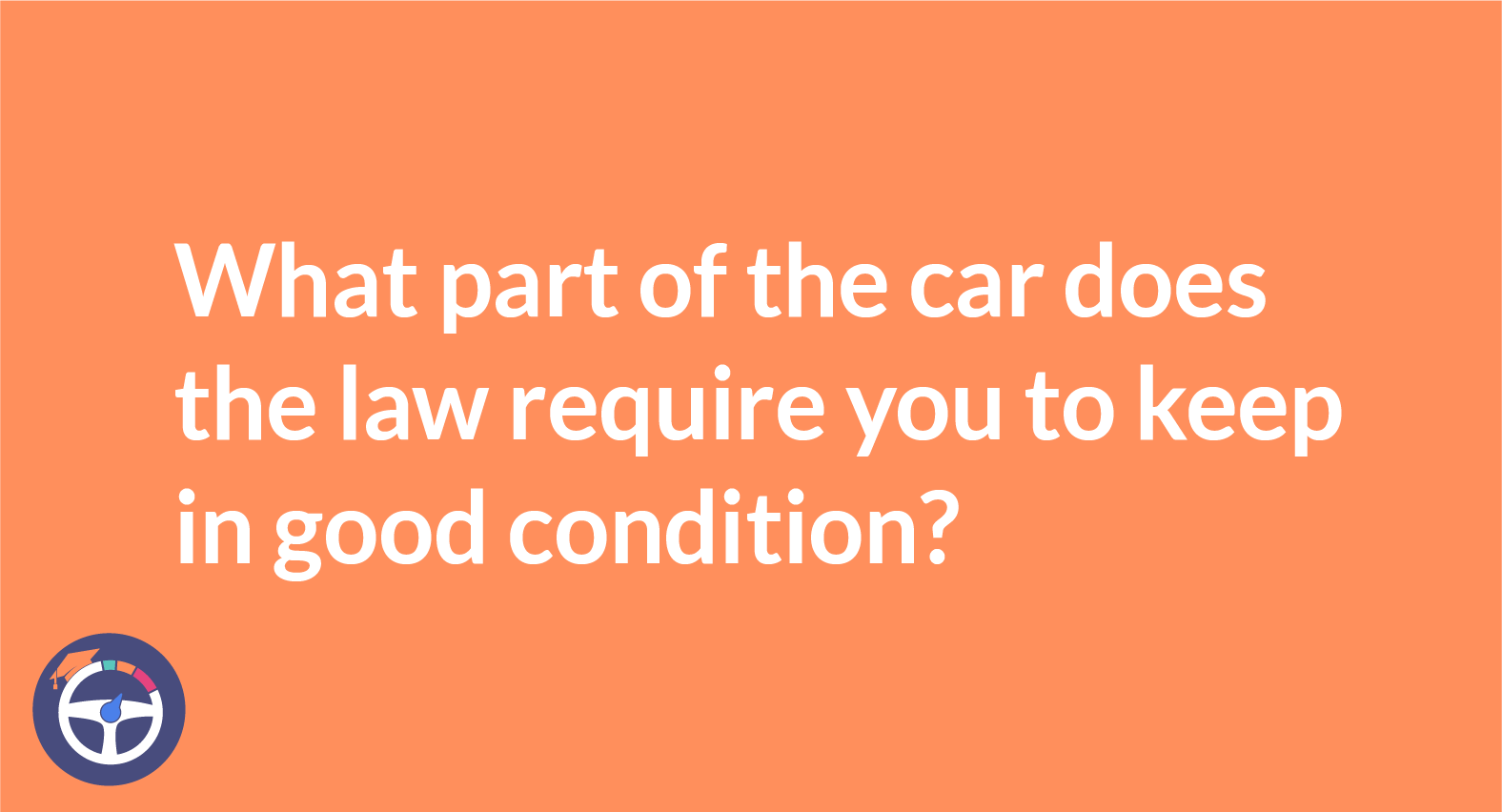What Part Of The Car Does The Law Require You To Keep In Good Condition?
Unless you are exempt, both you and your passengers are required to wear a seat belt or an appropriate child restraint. The seat belts in your vehicle should be in good condition and functioning properly, as they will be inspected during the MOT test.

Contents
- What Part Of The Car Does The Law Require You To Keep In Good Condition?
- Seat Belts Importance:
- Seat Belt Exemption: What Situations Allow for Not Wearing Seat Belts?
- Why is Vehicle Maintenance Important for Longevity?
- What are the Key Steps for Essential Car Maintenance?
- Why is Regular Vehicle Maintenance Important for Performance?
- That’s A Wrap!
- FAQ
- Can seat belts be repaired if they are damaged?
- Are there specific regulations regarding the maintenance of seat belts in vehicles?
- Do seat belt exemptions apply to all individuals with medical conditions?
- Are there any penalties for not wearing seat belts in situations where exemptions do not apply?
- Can regular vehicle maintenance help prevent seat belt malfunctions?
When it comes to maintaining your vehicle, certain components are legally required to be in good condition. This ensures your safety and the safety of others on the road. One such crucial component is your seat belts. In this comprehensive guide, we'll highlight the importance of seat belts. We'll also discuss seat belt exemptions and the significance of vehicle maintenance. This is crucial for overall longevity and performance.
Seat Belts Importance:
Seat belts play a critical role in vehicle safety. They restrain occupants during collisions or sudden stops. They minimize the risk of injury. They do this by preventing occupants from hitting the vehicle's interior or being ejected. Seat belts are a primary safety feature in modern vehicles. They have been extensively tested and proven to save lives in accidents. Their proper use significantly reduces the severity of injuries sustained in crashes. This makes them an indispensable component of vehicle safety systems. Regular inspection and maintenance of seat belts are essential. This ensures their effectiveness in protecting occupants. Checking for signs of wear, fraying, or damage and promptly replacing worn-out or damaged seat belts are crucial. Additionally, ensure that the seat belt mechanisms, including buckles and retractors, are functioning correctly. This is vital for optimal safety. Maintaining seat belts in good condition is crucial. Doing so enhances protection for drivers and passengers. It also reduces the risk of injury in accidents.
Seat Belt Exemption: What Situations Allow for Not Wearing Seat Belts?
Seat belts are a fundamental safety feature in vehicles. They are designed to protect occupants in the event of a collision or sudden stop. However, there are situations where individuals may be exempt from wearing seat belts. These exemptions often relate to particular medical conditions. These conditions may make wearing a seat belt uncomfortable or unsafe. For instance, people with chest or abdominal issues may be exempt. Wearing a seat belt might worsen their condition during an abrupt stop or crash.
Additionally, there are practical situations where wearing a seat belt may not be feasible or safe. For example, when a driver reverses, a seat belt may limit movement. This restriction could impede the driver's ability to check blind spots properly. Similarly, delivery personnel may find it impractical to wear seat belts. Frequent exits and re-entries from the vehicle make it challenging. In such cases, exemptions may be granted for practical reasons.
Emergency vehicles like ambulances or fire trucks may have exemptions.
These exemptions accommodate the unique nature of their duties.
Seat belt use may hinder quick access to medical equipment or firefighting gear. Thus, exemptions allow emergency personnel to perform their tasks effectively. In emergency situations, wearing seat belts may be deemed impractical. This is because personnel need to move quickly and access equipment without constraint.
Remember: Seat belt exemptions exist, but they come with specific rules. These rules vary depending on where you live. Medical conditions or job requirements may qualify you for an exemption. If you think you might qualify, consult relevant authorities or medical professionals.
Why is Vehicle Maintenance Important for Longevity?
Preventive Maintenance: Regular maintenance allows for early detection and correction of potential issues. This extends the lifespan of your vehicle.
Optimal Performance: Properly maintained vehicles operate more efficiently. They ensure that all components function intended and contribute to overall safety. This includes seatbelts.
Safety Assurance: Routine maintenance helps ensure that safety features remain in good condition. It provides reliable protection for occupants in the event of a collision or sudden stop.
Cost Savings: Addressing minor maintenance needs promptly can prevent them from developing into major problems. This saves you money in the long run.
Resale Value: Well-maintained vehicles typically retain higher resale value. They demonstrate reliability and care, making them more attractive to potential buyers.
What are the Key Steps for Essential Car Maintenance?
Regular Inspections: Conduct routine inspections of the seat belts to check for any signs of wear, fraying, or damage.
Adjustment of Tension: Check and adjust the tension of the seat belt mechanisms. Ensure they provide adequate restraint in the event of a collision.
Functionality Check: Ensure that all components of the seat belt system are functioning correctly. This includes buckles and latches.
Follow Manufacturer's Recommendations: Stick to the manufacturer's recommended maintenance schedule for your vehicle. This schedule may include specific guidelines for seat belt maintenance and inspections.
Why is Regular Vehicle Maintenance Important for Performance?
Regular vehicle maintenance not only extends the lifespan of your car. But also ensures optimal performance. Well-maintained vehicles are more fuel-efficient, reliable, and safer to drive. By keeping your seat belts and other components in good condition, you can enjoy a smoother drive. Additionally, you'll have a more enjoyable driving experience overall. This also helps reduce the risk of accidents or breakdowns.
That’s A Wrap!
Keeping your seat belts in good condition is not just a legal requirement. It's also a crucial aspect of vehicle safety. By understanding the importance of seat belts, you can prioritize safety. Knowing about exemptions helps you navigate legal requirements. Regular vehicle maintenance ensures longevity and performance. Remember, safety first—buckle up and drive responsibly.
FAQ
1. Can seat belts be repaired if they are damaged?
In most cases, it is recommended to replace damaged seat belts rather than attempting repairs. Seat belts are critical safety components. And any compromise in their integrity could affect their effectiveness in protecting occupants during a collision.
2. Are there specific regulations regarding the maintenance of seat belts in vehicles?
There are general guidelines for vehicle maintenance. But specific regulations may vary by jurisdiction. It's essential to familiarize yourself with local laws and regulations. This will ensure compliance with seat belt maintenance requirements.
3. Do seat belt exemptions apply to all individuals with medical conditions?
Seat belt exemptions are evaluated case by case. They consider the individual's medical condition. The impact on safe seat belt use is assessed. It's crucial to consult authorities or medical professionals. They help determine eligibility for seat belt exemptions.
4. Are there any penalties for not wearing seat belts in situations where exemptions do not apply?
Yes! Failure to wear seat belts can lead to penalties. These include fines and penalty points on your driving license. Adhering to seat belt laws is crucial. It helps avoid legal consequences and prioritizes safety on the road.
5. Can regular vehicle maintenance help prevent seat belt malfunctions?
Regular maintenance ensures the overall performance and safety of the vehicle. It indirectly contributes to preventing seat belt malfunctions. By maintaining the vehicle's components in good condition! This includes the seat belt mechanisms. Drivers can reduce the likelihood of seat belt failures. This is during an accident or sudden stop.


